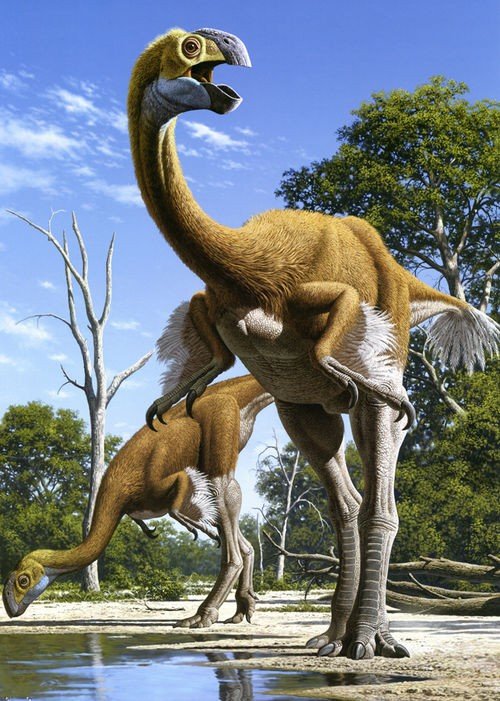Gigantoraptor (Giant Thief)
Basic facts
26 feet (8m) length
Late Cretaceous
Mongolia
Omnivore
Gigantoraptor is a genus of oviraptorosaur dinosaur that inhabited Asia during the Late Cretaceous period. Gigantoraptor was discovered in 2005 in the Erlian Basin of Inner Mongolia, China. Its name, "Gigantoraptor," literally translates to "giant thief," highlighting its immense size and predatory nature. It is likely that Gigantoraptor was a selective omnivore, meaning that most of the time it had a plant based diet, but when required it could also eat meat. Due to its size and beak it is still under speculation if it was completely a herbivore by nature or an omnivore. It was officially described by Xu Xing and colleagues in 2007. Gigantoraptor is classified within the Theropod group, belonging to the family Oviraptoridae.
Gigantoraptor was an astonishing dinosaur, dwarfing many of its contemporaries with an estimated length of 26 to 30 feet (8 to 9 meters) and a height of 16 feet (5 meters). Despite its imposing size, Gigantoraptor was a member of the Oviraptoridae family, which generally includes smaller, bird-like theropods. Its gigantism is a unique feature within this group and remains an area of active research.
The lower jaws, with a preserved length of 46 cm (460 mm), are toothless. They have fused into a broad, shovel-like shape, suggesting that the unknown skull was also toothless and likely had a horny beak, making it over half a meter long.
Gigantoraptor had long, slender hind limbs, indicating that it was a fast and agile runner. Its arms were relatively long compared to other theropods, and it possessed large, sharp claws on its hands. Its jaws were equipped with a beak-like structure, ideal for processing vegetation and potentially capturing smaller prey.
